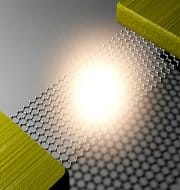IISER researchers use human hair to produce cheaper cathodes for solar cells
Researchers from Kolkata based Indian Institute of Science Education and Research (IISER) have produced cost-effective, metal-free cathodes using human hair for use in solar cells.
Significance: This is the first instance where a bio-waste-derived electrode (in this case human hair) has been used as cathode in a quantum dot sensitised solar cell device.
Key Facts
- IISER researchers have developed graphitic porous carbon cathode by cleaning and drying human hair and treating with sulphuric acid to achieve precarbonisation.
- It was then heated at different temperatures in the presence of inert gas for six hours to carbonise and bring better electrical conductivity for efficient charge transfer.
- This efficient green cathode achieves highly catalytic graphitic porous carbon stage at optimum temperature of 850 degrees C.
Advantages
- Producing graphitic porous carbon cathode using human hair is simple, quick and inexpensive. It has potential to bring down the cost of solar cells.
- The bio-waste-derived cathode has higher efficiency to convert visible sunlight to electricity. It also enhances the power conversion efficiencies.
- It generates high open-circuit voltage compared to conventional platinum and activated carbon cathodes.
- It is metal-free cathode, while commonly used cathode is made of platinum metal and metal sulfides.
Month: Current Affairs - October, 2016



yogesh
October 13, 2016 at 4:57 pmgood job
yogesh
October 13, 2016 at 4:57 pmgood job